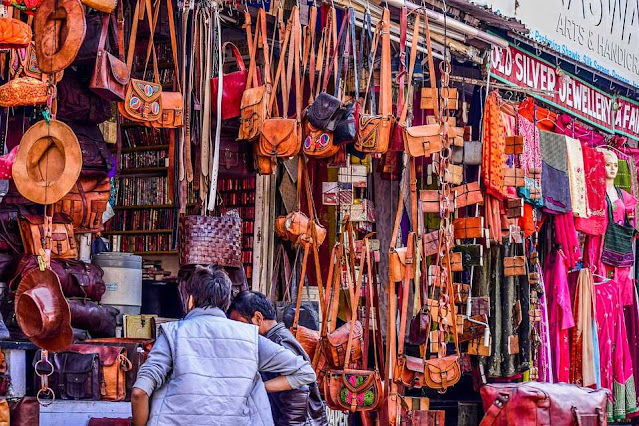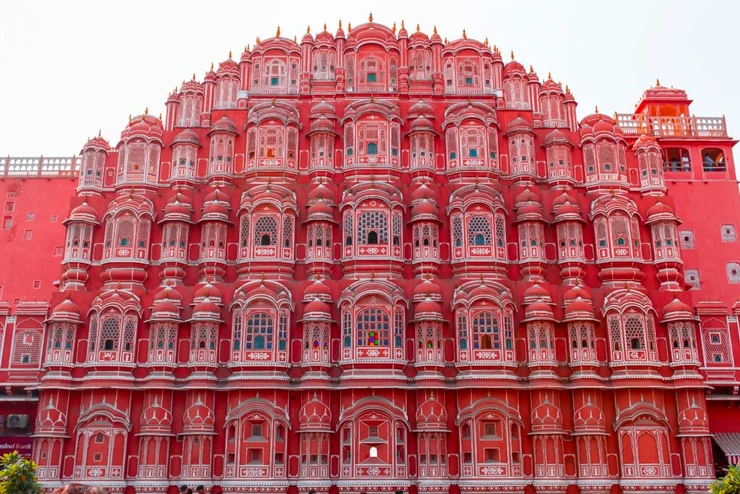With three days in Jaipur, you’ll have enough time to see its most important palaces and temples, with time left over to explore the celebrated Amber Fort and take a day trip out to Pushkar or the Taj Mahal. Here’s one way to divide your time
Day 1:
Pink City
1. Johari Bazaar
2. Tripolia Bazaar
3. Chandpol Bazaar
Day 2:
Forts and Temples
On your second day, head out to the Amber area on the outskirts of Jaipur, where the star attraction is the 16th-century Amber Fort, a gargantuan structure made of red sandstone and white marble. Highlights of the fort include the Sheesh Mahal (Palace of Mirrors), filled with tiny mirror shards in a mosaic pattern, and the zenana, a series of frescoed rooms once occupied by the king’s wives and concubines. Right below the fort sits the Anokhi Museum of Hand Printing, which focuses on one of the area’s most important textile crafts. After Amber, head back into Jaipur to visit some of its most important temples. Start with Galtaji, dedicated to the god of the sun, Surya. It's often nicknamed the Monkey Temple for the large primate community that lives on its grounds. Finish your day of sightseeing with a visit to the Birla Mandir, a contemporary, white-marble temple dedicated to Vishnu and his consort Laxmi.
1. Amber Fort
In the Pink City of Jaipur, cradled on the top of the Aravali Hill lies the Amer Fort, one of the most magnificent palaces in India. Also commonly known as the Amber Fort, this majestic building with its maze-like passages and serpentine staircases is an architectural masterpiece and with significant importance in Indian history. Only 11 kilometers away from the capital city of Jaipur, Amer Fort is clad in pink and yellow sandstone and is a part of an extensive complex. Amer Fort is an imposing structure overlooking the Maota Lake in Jaipur. Amber is a mesmerizing blend of Hindu and Mughal architecture. The Rajputs both used this Fort for defense purposes as well as residential purposes.
Timings : 9:00 AM - 6:00 PM
Light Show timings: English: 7:30 PM, Hindi: 8:00 PM
Time Required : 3-4 hours
Entry Fee: Indian National: INR 25, Students: INR 10, Foreign Nationals: INR 200
Elephant Ride for two at Amer Palace: INR 900
2. City Palace, Jaipur
The City Palace of Jaipur is one of the most revered attractions among the places to visit in Jaipur. An impressive fusion of Mughal and Rajput architecture, the palace is still home to the last ruling royal family, which lives in a private section of the palace. The opulent sections of the City Palace such as Chandra Mahal, Mubarak Mahal, Diwan-I-Khas, Diwan-I-Aam, Maharani Palace, still narrate the tales of the Jaipur’s glorious past and are ideal sights for history buffs and photographers.
Best time to visit: Cool breeze and moderate sunlight make the months of October to March a suitable time to visit Jaipur.
Timings: 10 AM to 5 PM
Entry fee: Rs. 10 for Indian travelers Rs. 50 for international tourists
Camera fee: For Indian travelers: Rs. 50 for still photography, Rs. 100 for videography For international travelers: Rs. 70 for still photography, Rs. 150 for videography
3. Jal Mahal
A beautiful example of ancient Rajputana architecture, Jal Mahal is a leisure palace built in the middle of the Man Sagar Lake. Only half is still floating, and the bottom half is submerged. A gentle boat ride is the only way to get to this ethereal palace. The palace appears like a glittering jewel in the evening. Jal Mahal ranks among the best places in Jaipur. Service apartments in Jaipur are got easily in the nearby areas of Jal Mahal. All that’s there are a few bazaars and oont sawaari (camel ride), whose services are also dwindling in number. Jal Mahal was constructed using the infamous pink sandstone, which is used in many of the buildings in Jaipur city. It’s advised to visit Jal Mahal during monsoon according to local tour guides as the place will look even more vibrant and pleasant. The rainy atmosphere gives an edge to the sandstone used in the architecture of the building. It is advised to visit the palace between October to March.
4. Nahargarh Fort
The king of Jaipur, Sawai Jai Singh II, commissioned Nahargarh in 1734 to help strengthen the security of his newly established capital after an ongoing battle against the Marathas. However, it's said that construction was hampered by the ghost of a dead prince, Nahar Singh Bhomia, who haunted the area. The fort was named after him to appease him. Nahargarh Fort is another Fort you must include on your list of best places in Jaipur. This fort stands atop the Aravalli Hills overlooking the Pink City and has been featured in quite a few Bollywood movies. It was intended as a holiday retreat for the royals and has been witness to quite a few historical events.
Entrance Fee: Rs. 50/- per person for Indian Nationals, Rs. 5/- per person for Indian Students, Rs. 25/- per person for foreign students, and Rs. 200/- per head for foreign tourists
.Opening Hours: 10:00 a.m. – 5:30 p.m. (daily)
Visit Duration: 2-3 hours.
5. Hawa Mahal
Hawa Mahal (English translation: "Palace of Winds" is a palace in Jaipur, India. It is built of red and pink sandstone. The palace sits on the edge of the City Palace, Jaipur, and also encompasses the zenana, or women's chambers. The Structure was constructed in 1799 by Maharaja Sawai Pratap Singh. He was so inspired by the special framework of Khetri Mahal that he constructed this grand and historical palace. It was designed by Lal Chand Ustad. Its special five-story exterior belongs to the honeycomb of a beehive with its 953 small windows called jharokhas decorated with complex latticework. Many individuals see the Hawa Mahal from the street sight and also believe it is the front of the Palace, but in reality, it is the back of that structure.
Visiting Timing: Daily, 9:30 am to 4:30 pm
Camera Costs: Is Rs.10 for Indians and Rs. 30 for foreigners
Access Fees: for Indian tourists are Rs. 20 while for foreign nationals, it is Rs. 50. You can also buy a composite ticket legitimate for 2 days that will cost Rs. 300 for Indians as well as Rs. 1000 for foreign travelers. With the ticket, you can club your check out to various other neighboring attractions.
Day 3:
The Taj Mahal or Pushkar
Spend your last day in the area on a day trip. If this is your only chance to visit the Taj Mahal in Agra, it’s worth traveling the five hours each way. For something slightly closer, consider heading to the holy town of Pushkar, about three hours away. A beautiful lake sits at the heart of this desert-oasis town, and large numbers of visitors come here annually to bathe in its holy waters. Plan the best trip for this vacation with the best taxi in Jaipur and get affordable deals.
Pushkar is best known as the site of an annual camel fair, and the town is also home to one of the only temples in the world dedicated to the Hindu creator-god Brahma.






















0 Comments